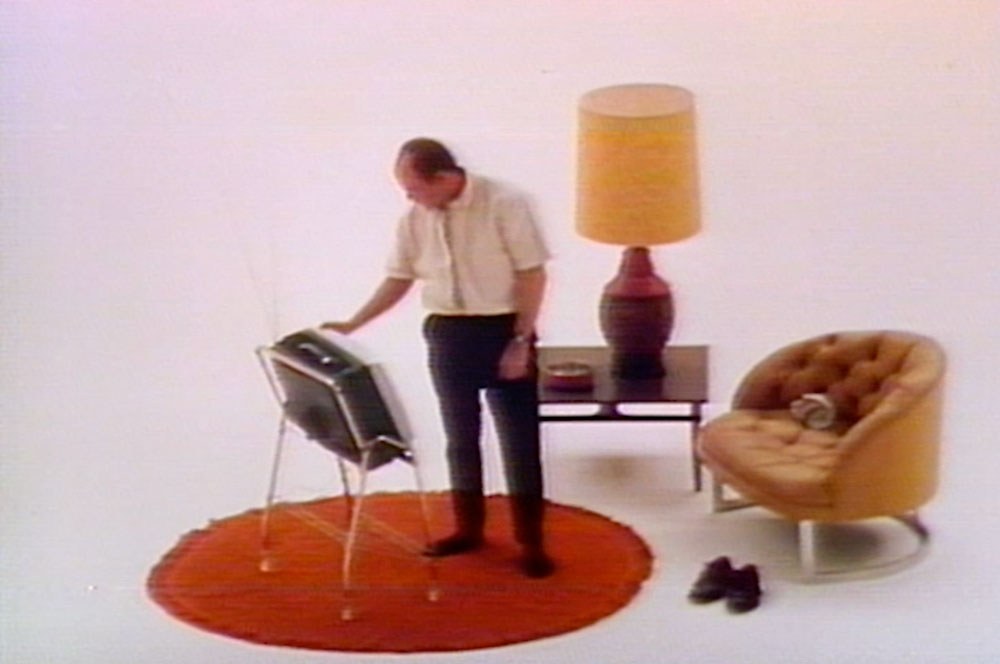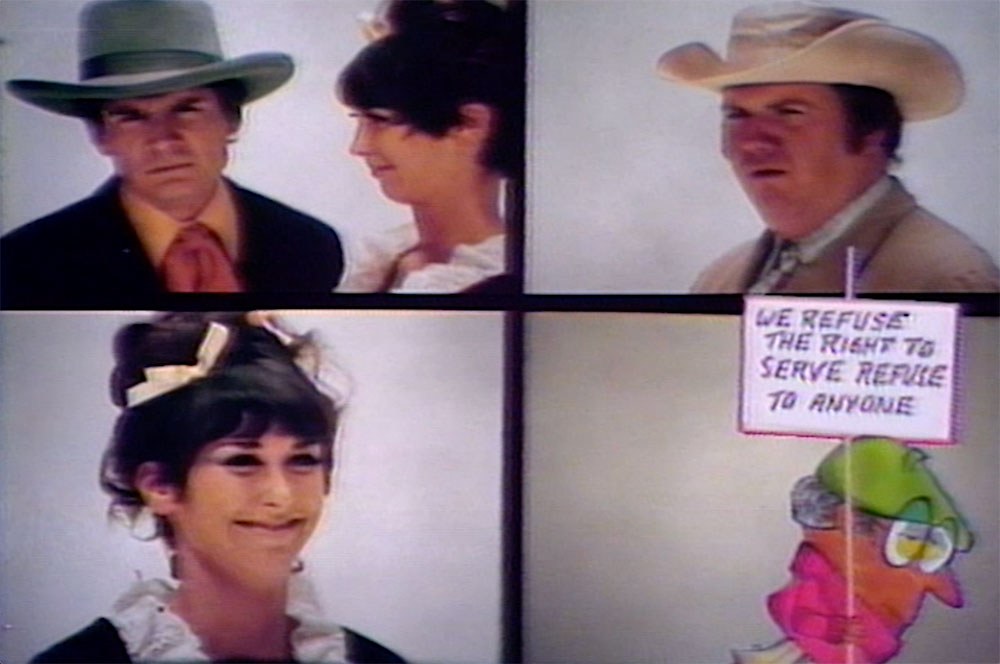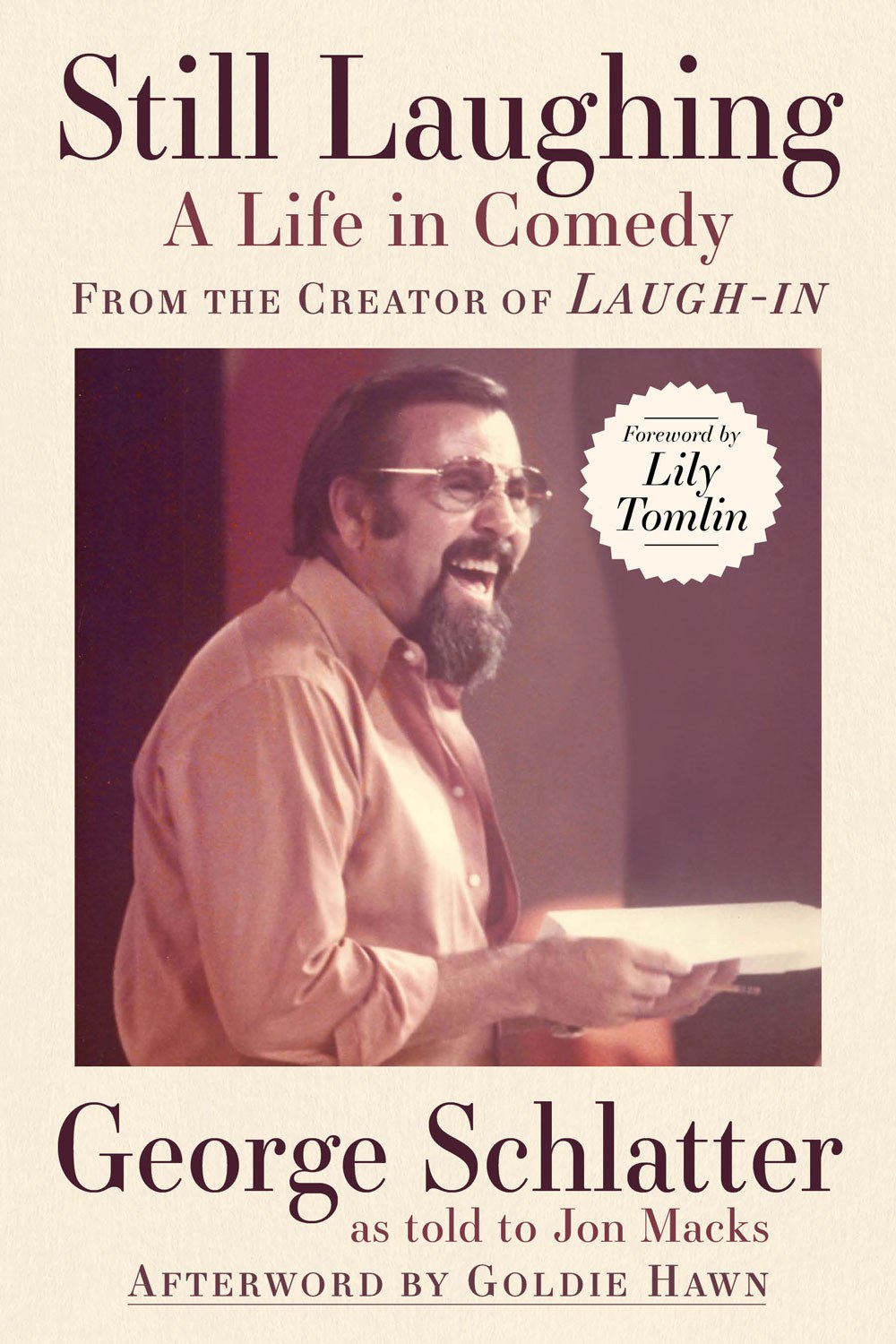Tune-In
Laugh-In creator George Schlatter finally gives his long-lost show Turn-On the official release it deserves. He loves that the internet noticed his white whale.
Sponsored By … You?
If you find weird or unusual topics like this super-fascinating, the best way to tell us is to give us a nod on Ko-Fi. It helps ensure that we can keep this machine moving, support outside writers, and bring on the tools to support our writing. (Also it’s heartening when someone chips in.)

(Handout photo)
54 years later, George Schlatter is giving Turn-On an official release
Recently, Turn-On’s re-emergence on YouTube has been drawing loads of attention, including a recent piece here on Tedium, and that attention caught Schlatter’s ear.
The trailer for Turn-On.
That led to a couple of things—one, I recently had the chance to speak to this enduring 94-year-old TV legend, who just released an autobiography, and two, Schlatter has decided to give Turn-On a proper release, putting the firsttwo episodes on YouTube—with the promise that more content is on the way.
Episode 1, with an intro from Schlatter.
Episode 2, which never saw public release.
Schlatter holds no shame for this unusual thing he brought into the world way back in 1969, and he seemed to be happy that someone took the time to notice what he was working on.
“Our successes are rare, but the failures we should enjoy because we can learn from them. I’ve learned from mine,” he said in an interview. “And you wrote about one of my biggest failures, of which I am enormously proud forever.”
Thus far, we’ve seen the release of two episodes in an unofficial form, but Schlatter says production on a third episode was fully completed before production was stopped.
Elements of that third episode will soon see the light of day online in the form of an updated version of the show that Schlatter is working on with the help of the curation firm Clown Jewels. The end result is being referred to as The George Schlatter Supercut—so get ready to nerd out about that.
After 54 years in purgatory, Turn-On will now live a fresh new life on the internet, thanks to George Schlatter.

(Handout photo)
Why the world needed a show like Turn-On
At the time of Turn-On’s release, Schlatter and his production partner Ed Friendly were riding high from the success of Laugh-In, which introduced Goldie Hawn and Lily Tomlin to the world and itself aggressively played with format.
But Schlatter had already experienced a long, diverse career before that point, having honed his skills on the Vegas strip and worked to bring figures like Judy Garland and Dinah Shore to the small screen. He also served as the Grammy Awards telecast’s first producer.
(His book, titled Still Laughing, is loaded with stories about all of these things, including a tale involving Ronald Reagan serving as the opening act for a bunch of chimpanzees performing in a hallway for nobody. Having now interviewed the guy, his voice carries over pretty well on the printed page.)
But his work up to that point made him realize that there was a need to shift the conversation forward, to shake up existing formats. Turn-On, full of risky experiments with format and visual style, was an attempt to keep up with the times and push the envelope.
“Armed with this new freedom I had because of the enormous success of Laugh-In, I said, ‘Wow. Let’s take it to the nth degree,’ which is what Turn-On did,” he said.
At the time it came out, there was no comparison point for what it was doing. But you can see the roots for it everywhere.
Given the array of entertainment formats we see in the modern day—on YouTube, on TikTok, on Instagram—you get the impression that he saw something that many of us did not by building a show full of quick-hit comedic bits that hit in all directions.
“It captured the shrinking attention span of the young generation, because at that point, everything was pre-digested and fabricated,” he said of Turn-On. “Here came something you could really chew on. And it was exciting. And it was disturbing. And it was fascinating. You didn’t just watch Turn-On; you experienced Turn-On.”
For a time, it seemed like it was going to work—the cast was solid, and so was the concept. Advertisers loved it, and so did ABC.
“When we ran that show for the network and everybody, everybody was excited—they increased the order from 13 to 18,” he said. “And it was that much of a feeling of euphoria, that finally there was a breath of fresh air somebody had opened the window and let air in. And so when it was canceled, you cannot imagine my disappointment.”
It was not meant to be. As pointed out in my original piece, Schlatter emphasizes that the reason Turn-On failed was a single station manager in Cleveland who wanted to keep the status quo.
“Everybody that saw that show loved it, except that one putz in Cleveland who wanted to keep Peyton Place, which was, you know, brain-dead,” he said. “I mean, it was just the same thing, over and over and over.”
Not to belabor the point, but Schlatter has no kind words for this station manager. As he writes in the book:
And although it has been fifty-four years, I never miss an opportunity to make a derogatory remark about this brain-dead, wing nut, Neanderthal, dipstick station manager in Cleveland who killed the show before he had ever seen it. He set innovative television back twenty years. Turn-On aired opposite a brilliant drama that had been highly touted for many weeks, so no one was ready to watch my show anyway, but when this putz went on the air and contacted station managers all over the country telling them how horrible it was, we had no chance.
Schlatter says that the station manager’s campaign seemed to not even be related to the content, but almost entirely about show preference.
“The people who canceled that show had never seen it,” he said. “And it was being canceled as it came across the country.”

Five things George Schlatter actually did in his career, according to his book
Schlatter’s book was a great read, full of a surprising number of things that he actually did. (Name me someone else who worked with Judy Garland, Cher, Redd Foxx, and a bunch of chimps. I’ll wait.) Anyway, here’s a selection of some of my favorite moments from the book:
- Helped develop the reality show format. Besides Laugh-In, Schlatter’s other big television success was Real People, a show that highlighted people with unique occupations. The show, a major success for NBC, notably helped give Byron Allen his first regular television gig in his pre-mogul years. “Many people today credit the increased interest in reality television to Real People,” he wrote. “Again, I’m sorry. On the plus side, Real People had a real impact.”
- Gave a eulogy at Frank Sinatra’s funeral. Schlatter, a longtime friend of Sinatra who dedicated a whole section to him in his book, was asked to speak at the Chairman of the Board’s funeral by Sinatra’s wife, on the promise he wouldn’t have to follow an A-lister. (Turns out, that wasn’t the case; he followed Gregory Peck.) The full text of the eulogy is included in the book. “Delivering this eulogy was the most difficult moment of my life, but I will always be glad that I did,” he wrote.
- Bought a house for Sammy Davis Jr. Davis, a friend from Schlatter’s days in Vegas, wanted to buy a house in Hollywood. However, this was the early ’60s we’re talking about. “This was not just pre-Zillow; this was pre–Civil Rights Act,” he wrote. “To top it off, Sammy was always in trouble with unsavory people.” To get around this mess, Schlatter bought the house in his name, then transferred the ownership to Sammy. Decades later, he put on a well-received tribute event in Davis’ honor.
- Put on presidential inaugurations for George W. Bush. Schlatter, who worked on a television special after the Gulf War despite not supporting that war, found himself producing both presidential inauguration ceremonies for the younger Bush, despite not being a Bush supporter, as a favor to a friend. He pulled it off with a sense of bipartisanship, and a whole lot of tough love. “I explained that they had to do this, I didn’t, and if this was going to work, I was going to do a celebration of the presidency, not a victory celebration for the Republican Party,” he recalled.
- Had Robin Williams hired out from under him. Before Williams blew up as the star of Mork & Mindy, Schlatter planned to make him the star of his Laugh-In revival, which was Williams’ national television debut. One problem, though: A poor programming approach by an NBC executive meant that the show was being deployed like a secret weapon rather than as a weekly show—a strategy that kept Williams on the market enough that ABC was able to bring him on for Mork & Mindy instead, sinking the revival.
Schlatter, who has already seen more than a lifetime’s worth of entertainment through his purview, seemed raring to see someone else try something as risky as Turn-On.
Schlatter contends that repetitive formats are harming the entertainment industry, leading to lost potential to do truly risky things. The WGA strike, which was still going on when we chatted, could be a potential opportunity to see some of television’s more creative minds take Turn-On-type risks.
“What I see is a desert out there of, ‘I want to be different, like everybody else,’” he said. “You know, the strike should hopefully excite writers who don’t have a window to come up with things that don’t need a window. The rebel, the malcontent, the troublemaker, should be encouraged, rather than shut out.”
Some of those experimental minds are out there—Nathan Fielder comes to mind off the top—but too often, they get buried in the sameness of old formats and dull thinking from single-minded executives.
He cited an example of the kind of creative thinking from earlier in his own career. One night in the 1960s, he was at the grocery store, and he ended up looking at a box of sugar-glazed popcorn called Screaming Yellow Zonkers. The packaging had a bunch of well-written jokes on it.
“So I tried to find the guy. And I couldn’t find him,” he says.
Eventually, after much looking, he found the guy—who didn’t believe he was talking to Schlatter at first. (“He hung up on me three times,” Schlatter recalled.) But soon enough, Schlatter flew the writer out to California for a meeting, and that writer, Alan Katz, joined the writing staff of Laugh-In and became a hugely successful writer and producer in his own right.
Presumably, there are people writing on the modern-day equivalents to the snarky box of popcorn, also looking to be noticed by producers and executives willing to look for a new approach.
Ultimately, Schlatter wants to see a shake-up just like the one he tried with Turn-On all those years ago.
“If I were 50 years younger, I’d give it a shot—and I may even give it a shot now, at this advanced level of senility,” he said.
Honestly, I hope he does. He may be 94, but he sounded like he was still just getting started.
--
Thank you Mr. Schlatter for taking the time to chat with me. This was truly a special opportunity. I can’t wait to see what you do with the Turn-On supercut.
Find this one an interesting read? Share it with a pal! And may you find your next inspired idea on a box of popcorn.
:format(jpeg)/uploads/tedium100423.gif)
/uploads/tedium100423.gif)


/uploads/ernie_crop.jpg)